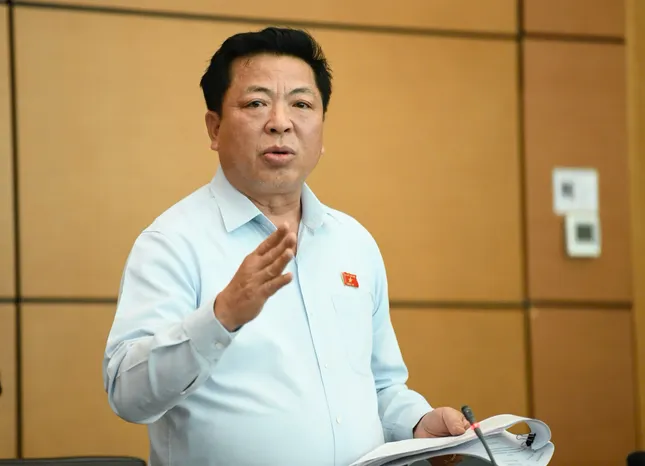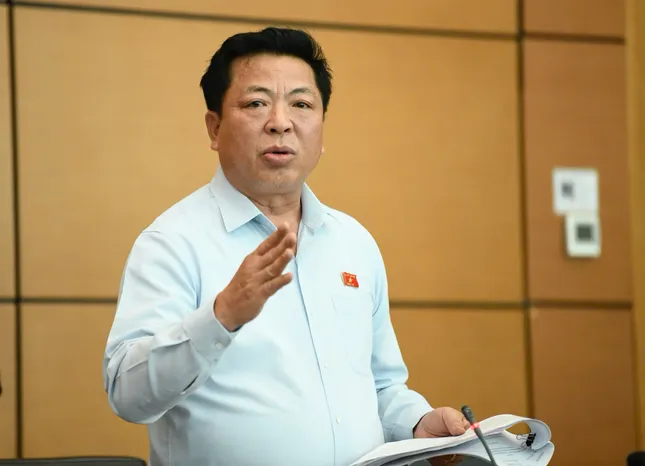After 50 years, still not technologically independent
On June 16, the National Assembly discussed the draft Amended Law on Railways in groups.
During the discussion, Mr. Tran Hong Minh, Minister of Construction, shared that Vietnam’s railway system has a long history of over 140 years and has greatly contributed to the country’s development, especially during the war years and the subsidy period.

Minister of Construction Tran Hong Minh at the discussion session. Photo: N.Y.
However, the minister pointed out that the railway projects have been largely dependent on foreign factors, from investment and capital mobilization to technology procurement. This has led to prolonged construction periods, cost overruns, and a lack of technology ownership. Each project uses technology from a different country, resulting in a lack of synchronization and difficulties in procurement, replacement, and repair, all of which are dependent on foreign countries.
Minister Minh emphasized that this situation reveals the inadequacies of the current legal system. It has been a significant concern for the Ministry of Transport in the past, and now for the Ministry of Construction. Despite 50 years of national liberation, we are still not technologically independent and lack mastery in this crucial field. Therefore, the proposed comprehensive amendments to the Railway Law aim to address these legal bottlenecks.
Streamlining processes and cost savings
Regarding the changes in the draft law compared to the current one, Mr. Minh mentioned that the old law had 84 articles but was too detailed, with many contents beyond the authority of the National Assembly and within the government’s jurisdiction. The amended draft law has removed 24 articles, leaving about 60 articles focusing on core issues.
The main contents included in the draft amended law are: State incentives for railway development, with clear criteria and conditions to attract investors. Minister Tran Hong Minh emphasized that if only the state invests and does not encourage the participation of private enterprises, implementation will be challenging. Therefore, the draft law has supplemented regulations on mobilizing capital and developing the private economy.
According to the minister, five investors have already registered to participate in railway projects. Thus, mechanisms and policies are necessary to facilitate their efficient investment.
Another new content introduced in the draft law is the development of railways integrated with the Transit-Oriented Development (TOD) model. This approach allows investors to recoup their investments not only from ticket sales (which could take a century) but also by exploiting the land funds at stations and urban areas, creating resources for reinvestment. This strategy ensures the project’s economic efficiency and promotes the development of modern and civilized urban areas.
Additionally, the draft law streamlines investment procedures by combining certain stages, such as allowing the combination of the pre-feasibility study report with technical design and construction drawings. “This can shorten the time for investment preparation and save costs for the state,” the minister stressed.
Notably, the draft law permits the separation of land clearance projects, enabling land clearance to be completed before construction, ensuring uninterrupted project implementation.









































